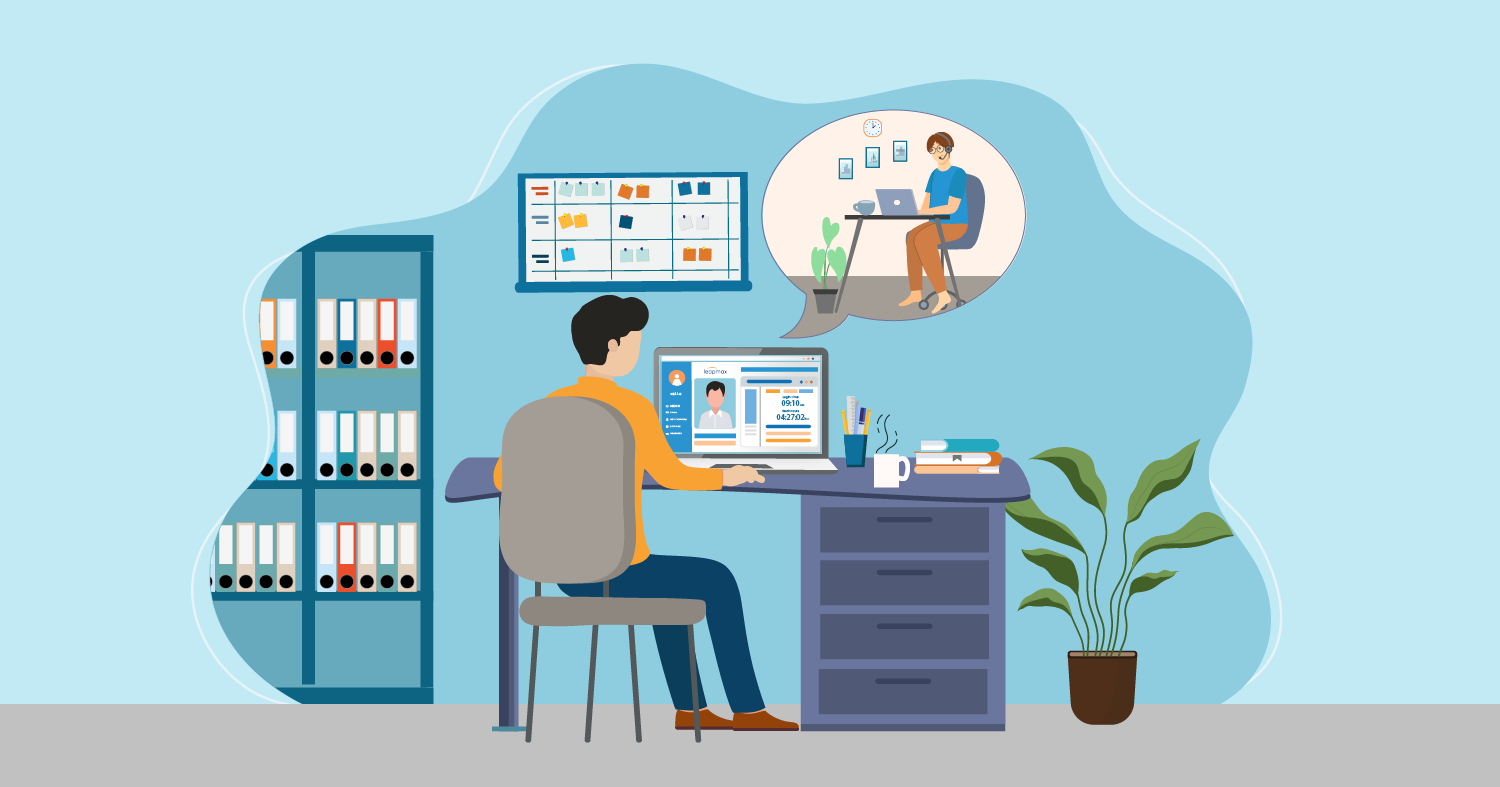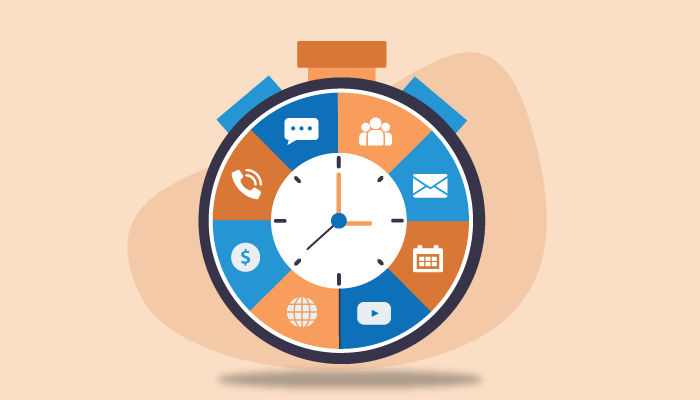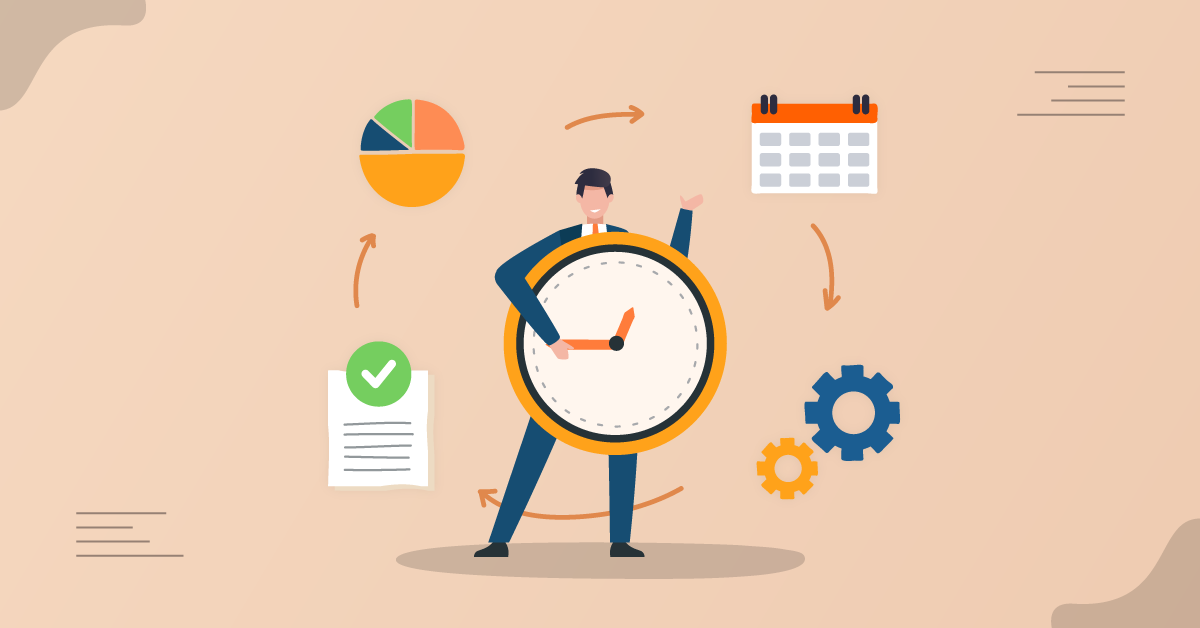Posted on: May 7, 2021
Make the Most of 8-hour Work Day Schedule with Time-Tracking Software
Get started
The famous Benjamin Franklin’s phrase “Time is money” is the best description to advocate today’s relationship between employee and employer. However, what is the actual story behind monitoring the shift using time tracking software hours we work for? There is no concept that a human can concentrate for eight hours on the work we do now. But these work hours have something else to tell.
Originally meant for the factory workers, 10-16 hours of workday stems from the 18th century. Factories had to run 24*7 during this period. Inevitably, such long shifts were brutal and did injustice to the workers. Therefore, workers started advocating for shorter workdays limited to eight hours.
A century later, Ford Motor Company gave this movement a turn by cutting their regular hours to eight. The result they got astonished everyone. Increased productivity! While it was hard to digest and implement for some, the eight-hour workday made the average work hours more humane.
In the present scenario, where the employers want to use the employees’ skills and time; even the employees are looking for flexibility in their shift timings and the way they work. Fast forward to the time we are in today. When companies are bearing unwanted losses after the pandemic, businesses cannot afford to let their assets and money be wasted on employees doing nothing. Employees don’t have to sit in front of the screens during their 8-9 hours of the shift. The end goal is to complete the tasks on time. Therefore, companies opt for remote desktop monitoring solutions to ensure the workflow does not stop.
Table of contents
Why is Time Tracking Crucial?
Employers understand the need to make every minute of productivity count. They need tools to track the status of employee tasks. Employee productivity tracking can help bridge the gap between priority tasks and employees spending time on less important projects. If we talk about employees, they must keep track of their pivotal projects and time management techniques. Whether they work remotely or from the office, time-tracking will help them be more productive and less tired.
Businesses have different segments and different teams assigned to them. It is almost impossible to measure every employee’s activity in divided categories. Therefore, companies need employee time-tracking software to know who works on what project and at which time. Let’s move forward to practical tips for your business to measure employee productivity and remove workday contradictions.

Tips to Measure Employee Productivity
Set Clear Goals
Businesses must have experienced this before. Employees are productive only half of the time than the actual targeted time. What could be the reason? They are not aware of end goals and deadlines for task completion. Why does this happen? Because project managers and supervisors do not provide clarity on how crucial the task is.
Assigning projects is different, whereas completing things on time and achieving a positive outcome is what businesses need today. Employee time-tracking software can help businesses to refocus and realign their work-from-home time strategies.
Create Feedback Culture
Feedback is the ultimate way to let your employees know where they stand and what employers expect from them. However, the feedback that employees get must be constructive and pure, not containing any personal prejudices. Project managers must ensure that every employee in their team is equally responsible for the work they do.
Having said that, their feedback should make a difference in their work and not ruin their passion and productivity. Most of the time, employees can come forward and give feedback and suggestions to the supervisors.
Enable Efficient Collaboration
The present concerns remote work, flexible shifts, and work-from-home duties. Companies across the globe are still attempting to sustain the remote work culture. They need effective collaboration and the right tools to enable seamless team communication.
Employees also need to share their ideas to feel connected to the teams. Efficient tools like live chat software can help employees build camaraderie and work with focus.
Get Employee Productivity Tracker
It is essential to know your work priorities so that one task does not take crucial hours of another task. Employers should have employee time tracking software to assign tasks and time effortlessly to the employees. Employees must adhere to their tasks to complete deadlines and tasks on time. Remote desktop monitoring can help supervisors to monitor and track task status from anywhere without interruptions.
By using an employee productivity tracker, businesses can detect the idle time of employees spent on digital activities. It is equally important for employees to check their schedules as well. Nowadays, apart from regular 9-5 work hours, employees are opting for flexible hours. Whatever will be the case, let’s check how employees can make a functional 8-hour schedule.
Why Flexible Work Hours Are So Popular?
We can see many people sticking to the 9-5 regime. Equally so, flexible work hours are gaining much attention with their own set of perks. The 8-hour work schedule is more about the things designated to a particular time slot. And rightfully, with flexible work hours, employees can schedule and segregate their tasks accordingly.
Even after the tried, tested, and proven models, the 8-9 work slot is still the norm for many. Here are some tips for employees to improve their performance at work who follow 8-hour workdays.
Find Optimal Work Hours
An 8-hour work schedule does not mean that employees have to work 9-5 only. They can always choose what works best for them to show productivity. For instance, they can feel energetic 10-7 or even start at 11.
No matter what the time slot is, segregating work hours in the office from work at home is difficult. Even if some of them start early or later than their coworkers, the specific slot and concentration are all they need.
Identify and Address Time Wasters
When employees work remotely, it is more likely that people at home will distract them. The household chores will haunt them, and unlimited work calls and tons of messages could disturb their peace of mind. The calls and notifications could be urgent sometimes.
However, they must understand the difference between being available and spending time on unnecessary things. Employees need to identify those things that distract them for a longer time by setting limitations.
Keep a Time-Sheet
Employers know that if they are paying employees for 8 hours, then they can expect productivity in return. Similarly, employees have to keep a record of their tasks so that they can take accountability for what they do.
Employees can take advantage of work from work-from-home time-tracker through which they will finish everything on time. Employee productivity tracking keeps employers and teams on the same page so there is no conflict in task achievement.
Conclusion
For balancing and seamlessly maintaining an 8-hour workday, time-tracking will play the lead role. Both employers and employees need to take time-tracking seriously. The best thing about today’s way of time-tracking is that it does not take much effort.
Organizations can make their day-to-day workflow much simpler and more effective when they know their goals and track time. Especially in unprecedented times like today, when most of the employees work from home, employee monitoring software ensures easy execution of things.







